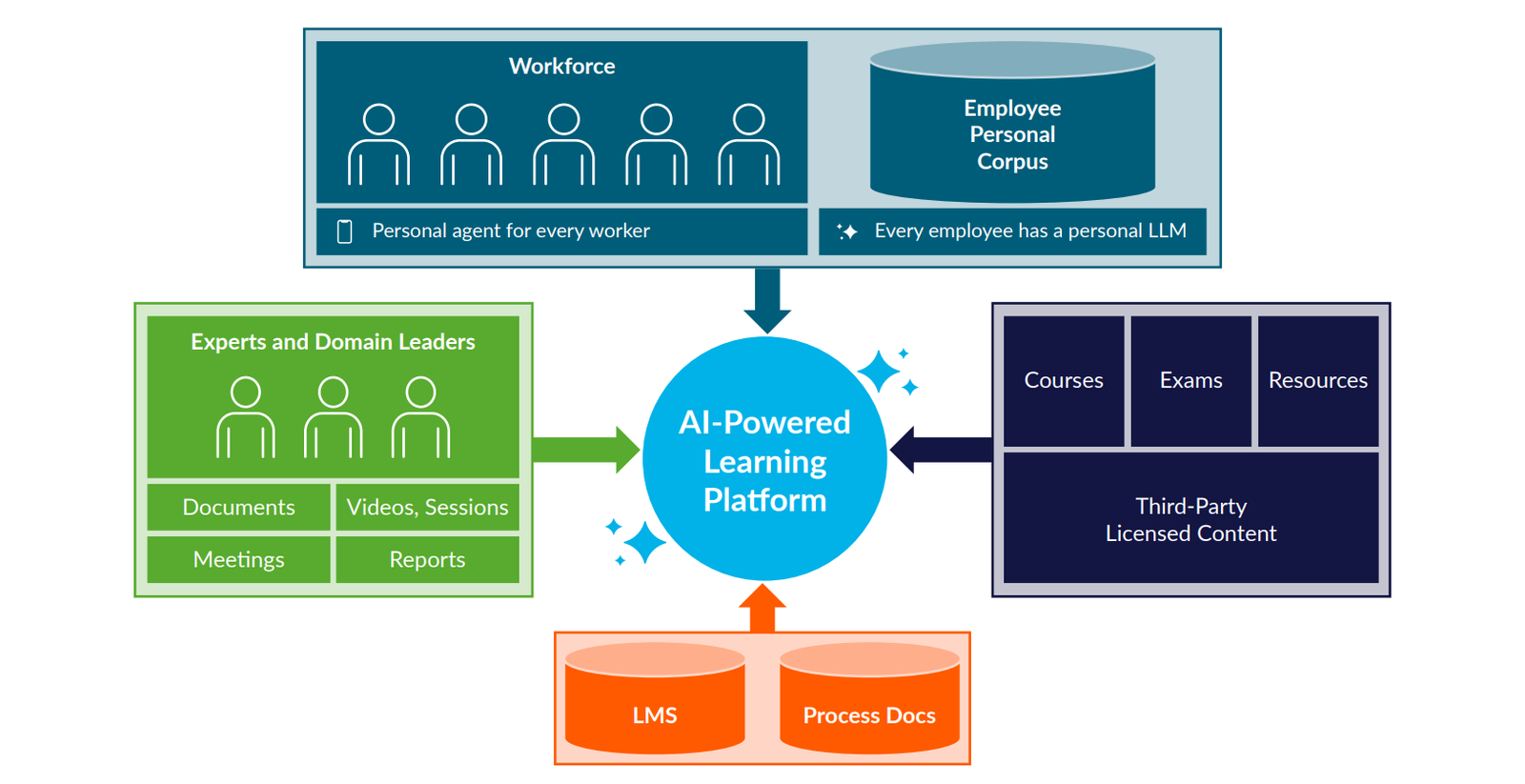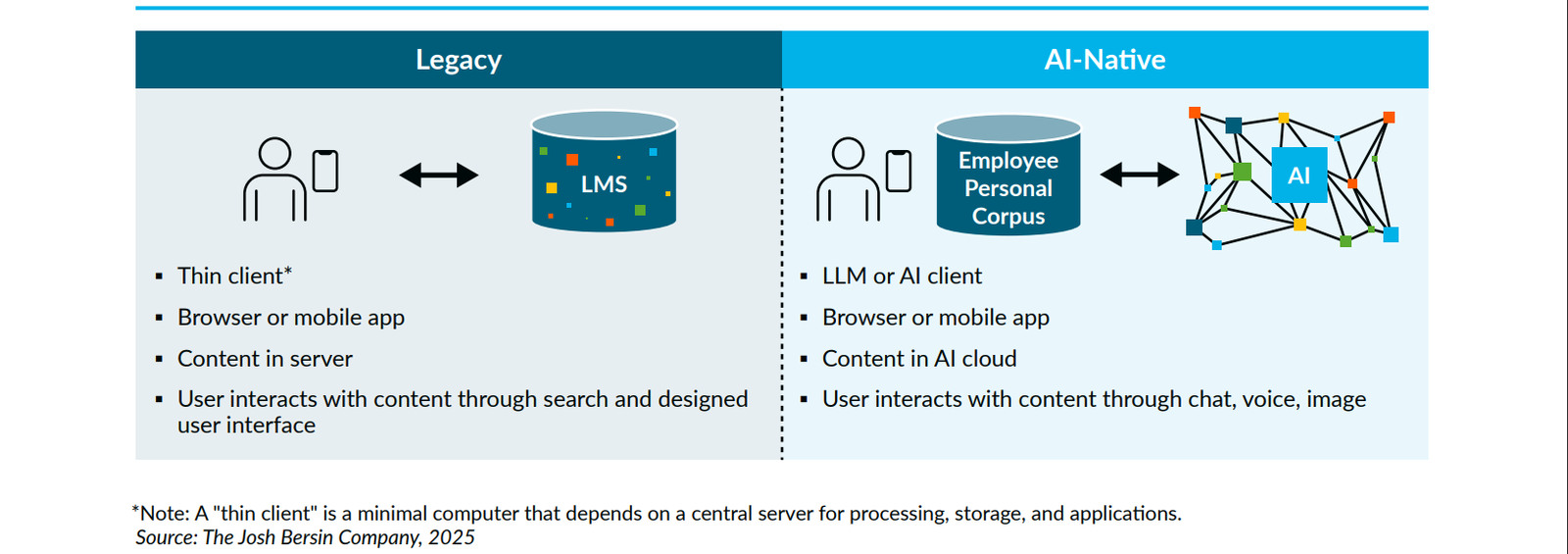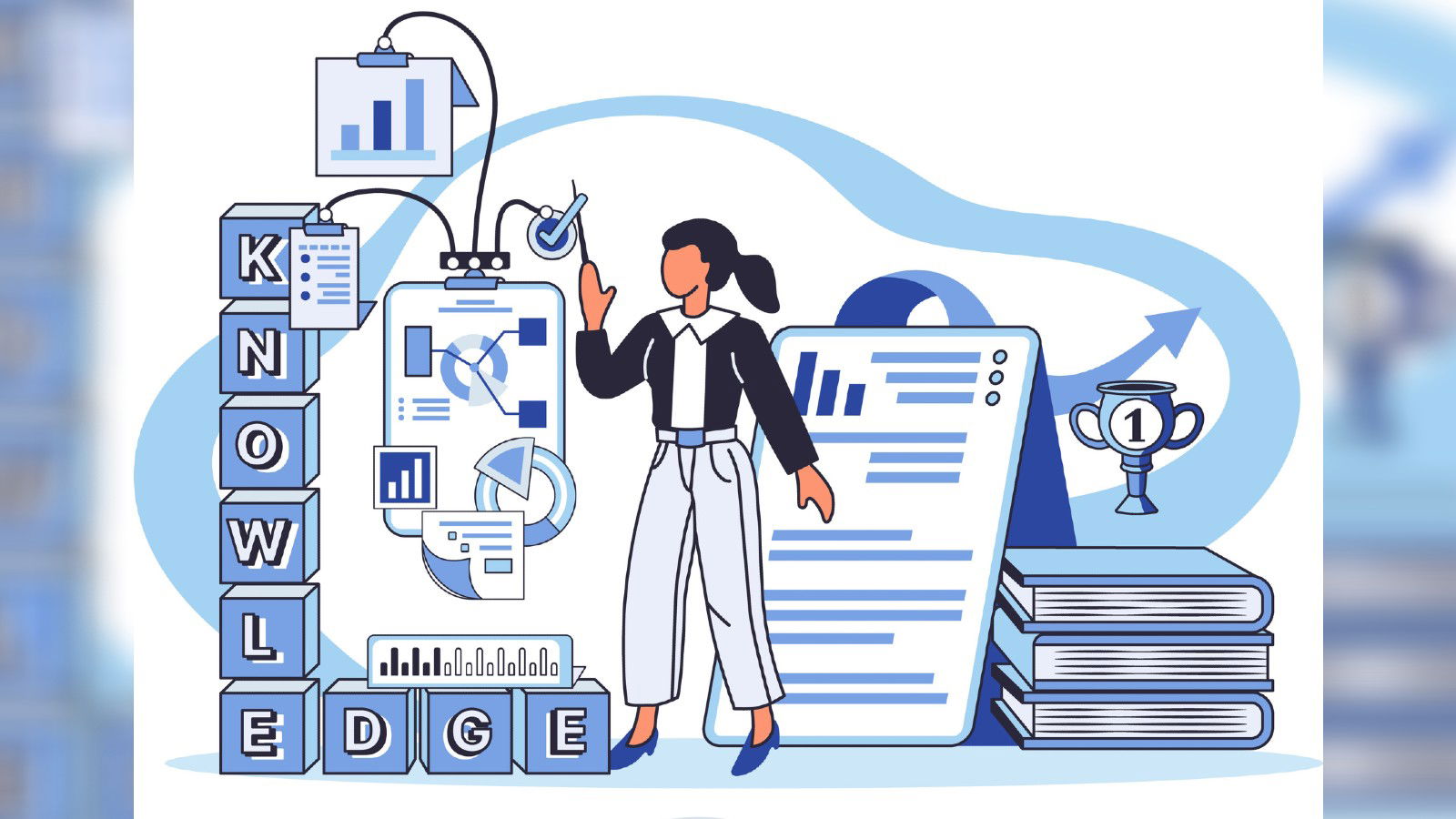share on
With AI reshaping skills and workplace demands, L&D teams must evolve from traditional learning models to dynamic, personalised, and scalable learning ecosystems for the modern workforce.
Artificial intelligence (AI) is here, and it's changing the way we work, learn, and grow. Traditional learning models are no longer just outdated — they’re quickly becoming a liability.
For learning & development (L&D) leaders, this isn’t just another tech buzzword to watch from the sidelines. With 39% of job skills set to change or vanish by 2030, continuous upskilling has become non-negotiable.
Yet, despite the buzz around digital transformation, only 15% of organisations are exploring new learning technologies. Most stick to familiar ground, while adoption of adaptive, personalised, and immersive learning remains low.
It’s not a lack of ambition — it’s the weight of legacy systems and outdated models holding teams back. But there is a way forward. A new report by Josh Bersin outlines four key moves to help organisations embrace AI-first learning. But first, let’s unpack what that really means — and why it’s a game-changer.

AI-first learning: A new role for L&D
AI-first learning replaces or significantly enhances the traditional LMS with a dynamic, generative AI-powered platform. This technology creates personalised, skills-based content — including courses, simulations, virtual tutors, and assistants — in real time, enabling “learning in the flow of work.”
With AI embedded in everyday tools, learning becomes hyper-local, accessible, and adaptive — from frontline workers to office managers. Other benefits include automatic or instant translation, ad-hoc conversion into podcast or other preferred formats, and the ability for each learner to personalise their learning and support needs uniquely.
In short, AI is no longer a future concept but the ultimate enabler for responsive, scalable corporate learning.
From traditional LMS to AI-native learning
Most companies will maintain their legacy programmes while gradually phasing in AI-first solutions, inevitably evolving the L&D technology architecture into two major forms: legacy and AI-native.

Legacy
- Content such as videos or courses is stored in a central LMS.
- Learners access it through a built-in interface to watch, pause, or search content.
- The LMS tracks scores, progress, and completion rates.
- Admins monitor learner activity and performance through backend dashboards.
AI-native
- Each learner has their own AI assistant (powered by a local LLM) on their phone or device.
- This assistant communicates with an AI server that creates and serves content in real time.
- Learners can interact more naturally — asking questions, uploading documents, photos, or voice notes.
- The AI can respond instantly or send complex queries to the server for deeper analysis.
Traditionally, most companies use a federated model for training. A corporate team manages centralised investments (e.g., LMS, leadership programmes, DEI, compliance), while individual learning teams or L&D business partners work with functional leaders and geographies.
AI flips the traditional learning dynamic by introducing personalisation, relevance, and speed, boldly enabling L&D to operate in a decentralised way and democratise learning. Learning becomes decentralised, co-owned by HR, the business, and employees.
Employees are now empowered to create and share their own courses and learning journeys. This approach allows lean, centralised L&D teams to serve as stewards of workforce enablement, focusing on learning technology strategy and enterprise-level priorities.

The evolving role of the CLO
In the early 2000s, chief learning officers (CLOs) held strategic, C-level roles — leading major learning, tech, and career initiatives aligned with business growth. They built corporate universities and worked closely with IT on custom systems.
Over time, their influence declined. Many now sit several layers below the CHRO, limiting their impact. As L&D became more decentralised, the CLO role lost visibility.
Today, however, the CLO is making a comeback — poised to regain strategic importance in shaping workforce capability in the AI era.
The modern CLO is envisioned as a tech-enabled, AI-savvy leader aligned with business and IT, moving beyond managing corporate learning assets to curating dynamic learning experiences responsive to organisational needs.
How companies can move towards AI-first learning
Modernise the learning tech stack with AI-native solutions: Instead of relying on multiple systems (LMS, LXP, authoring tools), the future learning architecture centres on an AI-powered platform accessed through personal AI agents. This setup enables adaptive, on-demand, and outcome-driven learning — often at a lower cost than traditional models.
Upskill and transform the L&D team: For L&D to lead today, teams must develop skills in AI, analytics, and digital transformation, and learn to build or use custom AI tools to improve efficiency and personalisation.
Equally critical are human-centred capabilities like change management, strategic consulting, and systems thinking. L&D must model the behaviours and skills they aim to develop across the organisation — adapting quickly and turning insights into action.
Position corporate learning as enablement, not training: With AI tools like chatbots and custom agents, L&D teams can work with IT to deliver learning in more flexible, responsive ways. The focus is shifting from standalone courses to integrated mes that support performance across the organisation.
Build a lean AI-powered L&D operating model: An AI-first operating architecture streamlines L&D by integrating work, learning, and knowledge management across three tiers – enterprise team, functional and regional, and individuals and teams.
This model shifts L&D from content production to strategic enablement, focusing on capability building and performance support. AI drives fundamental changes, allowing organisations to rethink instructional design, reduce costs, and position L&D as a problem-solving function.
In summary, the era of incremental corporate learning is over. To drive real business impact, learning must become dynamic, customised, and focused on enablement. CLOs now have the chance to lead workforce transformation, using AI to boost efficiency, innovation, and strategic value — making L&D central to business growth.
READ MORE: DBS launches AI-powered coaching companion to help staff thrive in the future of work
Infographics / It’s Time for an L&D Revolution – The AI Era Arrives
share on


